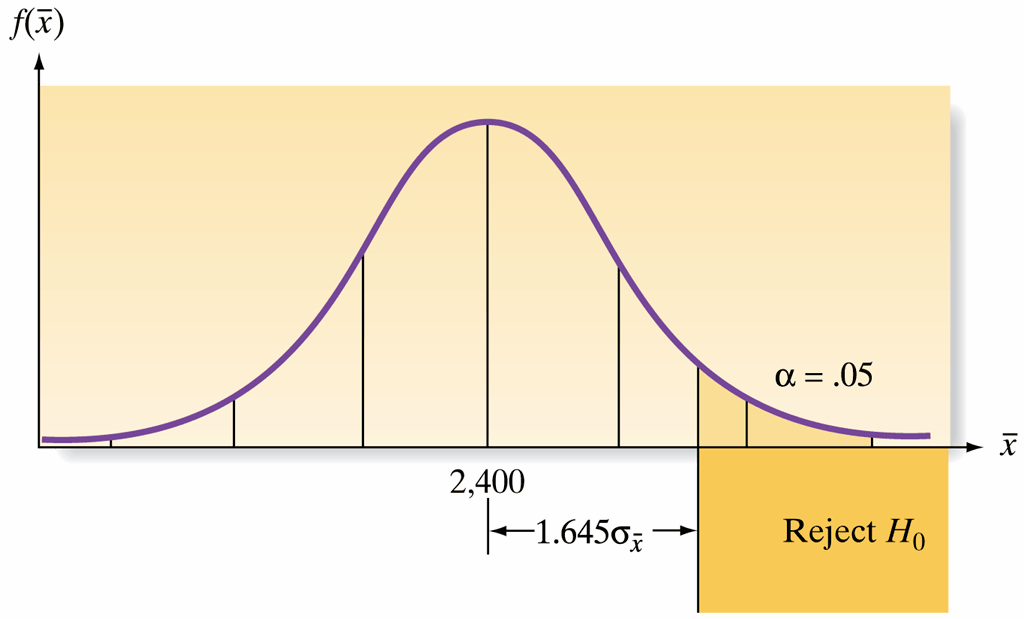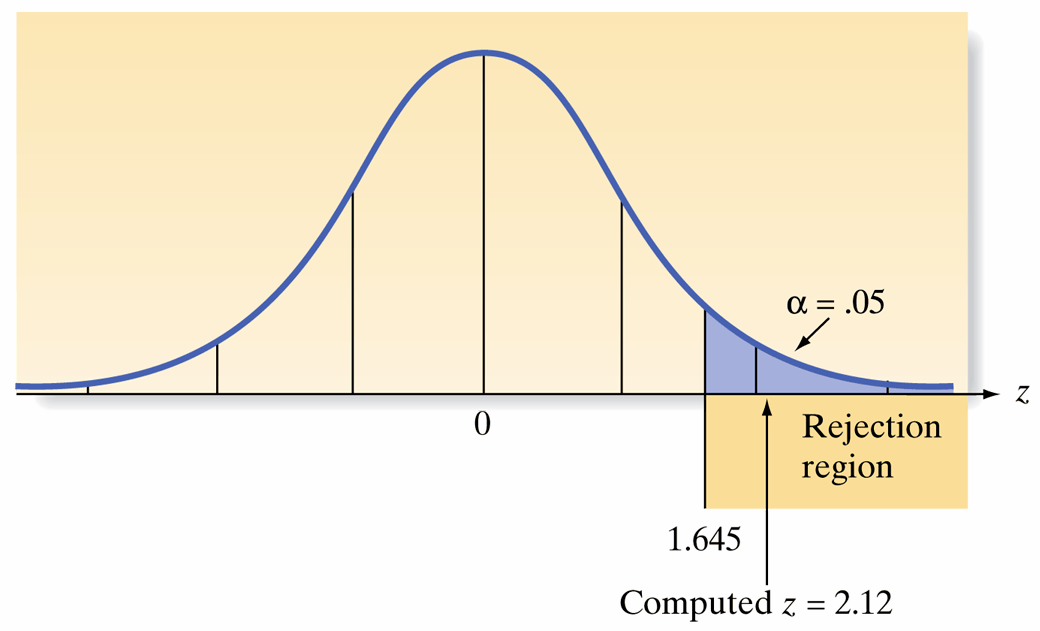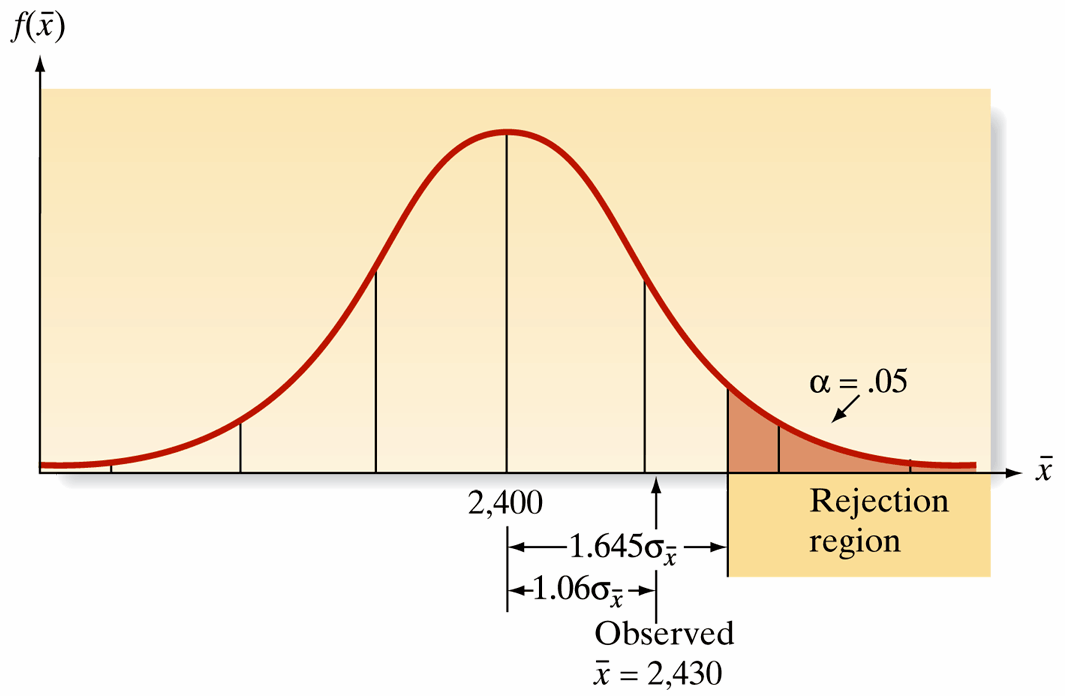Day 22
Math 216: Statistical Thinking
Bastola
Introduction to Hypothesis Testing
- Hypothesis testing is a statistical method used to decide whether to support or refute a specific claim about a population parameter based on sample data.
- Analogous to a judicial process: The null hypothesis (\(H_0\)) represents the “status quo” (e.g., “innocent until proven guilty”).
Elements of a Test of Hypothesis
- City regulations require residential sewer pipes to have an average breaking strength greater than 2,400 pounds per foot.
- Manufacturers must demonstrate that their products meet this standard.
Hypotheses
- Null Hypothesis (\(H_0\)): In theory, \(\mu \leq 2400\). If we reject \(\mu = 2400\), \(\mu < 2400\) is also rejected.
- Alternative Hypothesis (\(H_a\)): \(\mu > 2400\) (Pipes meet or exceed the standard).
Testing the Hypothesis
Computation of Test Statistic
- By the Central Limit Theorem, for large samples (\(n \geq 30\)), \(\bar{x}\) approximates a normal distribution.
- Test statistic \(z\): \[ z = \frac{\bar{x} - \mu_0}{\sigma/\sqrt{n}} \] where \(\sigma\) is the population standard deviation and \(\mu_0 = 2400\).

Decision Making
- If the observed \(\bar{x}\) exceeds 1.645 standard deviations above 2,400, we consider rejecting \(H_0\).
- Rejection implies that a rare event (occurring with probability \(\leq 0.05\) under \(H_0\)) is unlikely without true cause (i.e., \(H_a\) is likely true).
Evidence from Sample Data
- Sample Characteristics:
- Number of samples (\(n\)): 50
- Mean strength (\(\bar{x}\)): 2,460 pounds per linear foot
- Standard deviation (\(s\)): 200 pounds per linear foot
- Test Statistic Calculation:
- The test statistic (\(z\)) is calculated as follows: \[ z = \frac{\bar{x} - 2400}{s/\sqrt{n}} \approx \frac{2460 - 2400}{200 / \sqrt{50}} = \frac{60}{28.28} \approx 2.12 \]

Types of Errors
Type I Error
- Analogy: Convicting an innocent person.
- Occurs if we reject \(H_0\) when it is, in fact, true.
- Probability of Type I error is denoted by \(\alpha\) (commonly set at 0.05).
Types of Errors
Type II Error
- Analogy: Acquitting a guilty person.
- Occurs if we fail to reject \(H_0\) when, in fact, \(H_a\) is true.
- Probability of Type II error is denoted by \(\beta\).
- Unlike \(\alpha\), \(\beta\) is not usually pre-specified but affected by the sample size, effect size, and the set \(\alpha\).
Types of Errors


Rejection Region
- The set of values of the test statistic that lead us to reject \(H_0\).
- For this test, it’s values greater than the z-value corresponding to a 0.05 probability in the upper tail of the normal distribution.
Summary
- Hypothesis Testing as a Judicial Process:
- \(H_0\): The defendant (population parameter) is presumed innocent (equals 2400) until proven otherwise.
- \(H_a\): Claims the defendant is not innocent (greater than 2400).
- We examine the “evidence” (sample data) to decide whether it sufficiently supports \(H_a\) over \(H_0\).